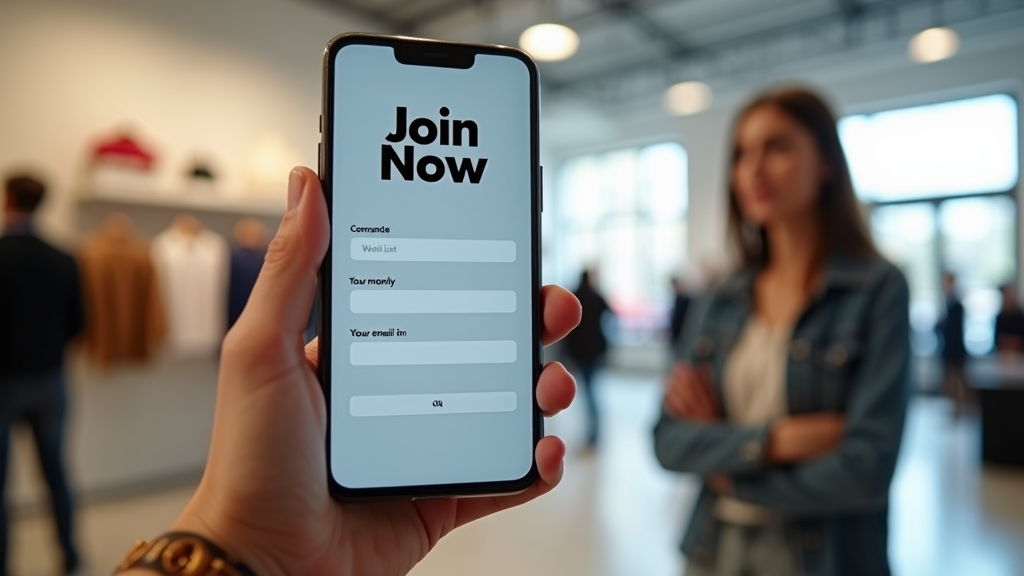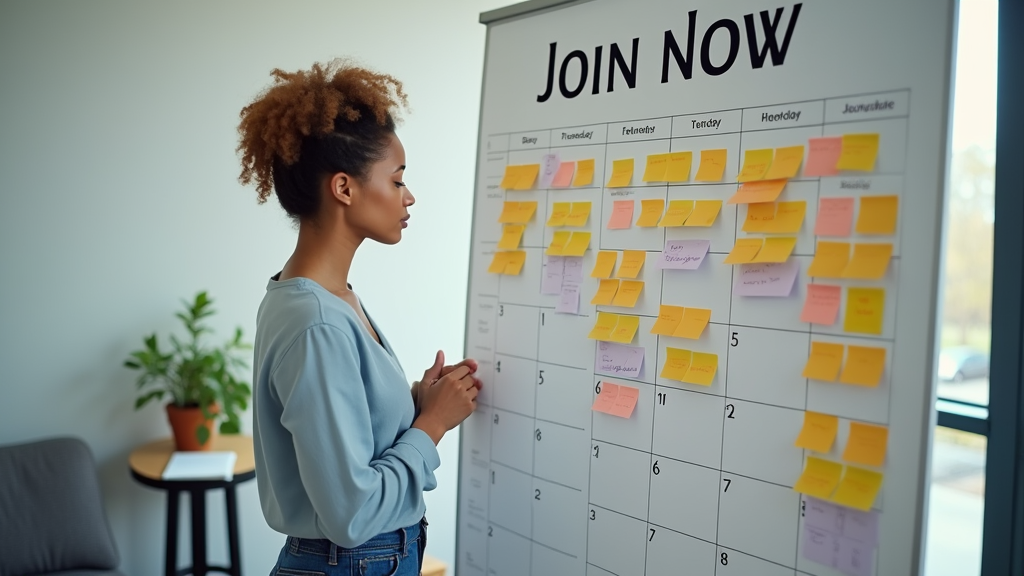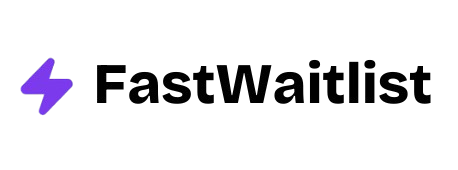
Understanding Waitlist Landing Pages
What Are Waitlist Landing Pages?
Waitlist landing pages are specialized web pages designed to capture interest and collect contact information from potential customers before a product or service launch. These pages serve as a powerful tool for businesses to build anticipation, gather leads, and gauge market interest in their upcoming offerings.
The primary goal of a waitlist landing page is to convince visitors to sign up for early access or notifications about a future release. By doing so, companies can create a pool of eager customers ready to engage with their product once it's available. This strategy is particularly useful for startups, new product lines, or exclusive services where demand might outstrip initial supply.
When to Use Waitlist Landing Pages
Waitlist landing pages are most effective in specific scenarios. They're ideal for:
- Product launches: When introducing a new product or service to the market.
- Limited releases: For products or events with restricted availability.
- Beta testing: To gather early users for feedback and testing.
- Exclusive offers: To create a sense of exclusivity and urgency.
However, they may not be suitable for established products or services that are readily available. The key is to use waitlist pages when there's genuine scarcity or a compelling reason for customers to wait.
Benefits of Implementing Waitlist Pages
Implementing a waitlist landing page can offer several advantages to businesses:
- Lead generation: By collecting email addresses, companies can build a targeted list of interested prospects.
- Market validation: The number and quality of sign-ups can indicate potential demand for the product.
- Building anticipation: A well-designed waitlist page can create buzz and excitement around the upcoming launch.
- Customer insights: Data collected can provide valuable information about the target audience.
By leveraging these benefits, businesses can set the stage for a successful product launch and create a foundation for future marketing efforts.
Essential Elements of a High-Converting Waitlist Landing Page
Crafting a Compelling Headline and Subheadline
The headline is often the first element visitors see on your waitlist landing page. It needs to grab attention and clearly communicate the value proposition of your upcoming product or service. A strong headline should be concise, intriguing, and highlight the main benefit or unique selling point.
For example, a headline like "Be the First to Experience AI-Powered Productivity" immediately tells visitors what they're signing up for and creates a sense of exclusivity.
The subheadline supports the main headline by providing additional context or benefits. It should expand on the headline's promise and give visitors a reason to continue reading. A good subheadline might read, "Join our waitlist to boost your efficiency by 50% with our revolutionary AI assistant."
Communicating Clear Value Propositions
Your waitlist landing page must clearly articulate two types of value propositions:
-
Product value proposition: This explains why your product or service is worth waiting for. It should highlight the main features, benefits, and how it solves a specific problem for the user.
-
Waitlist value proposition: This communicates the advantages of joining the waitlist itself. It could include perks like early access, special pricing, or exclusive content for waitlist members.
Both propositions should be prominently displayed and easy to understand at a glance. Use bullet points or short paragraphs to break down the key benefits and make them easily scannable.
Incorporating Engaging Visuals
Visual elements play a crucial role in making your waitlist landing page attractive and informative. High-quality images, graphics, or videos can help visitors visualize the product and its benefits. Consider including:
- Product mockups or prototypes
- Lifestyle images showing the product in use
- Infographics explaining key features or benefits
- A short video teaser of the product in action

Remember to optimize all visual elements for fast loading times, as page speed is crucial for conversion rates.
Writing Persuasive Copy
The copy on your waitlist landing page should be concise, compelling, and focused on the benefits to the user. Use a conversational tone that resonates with your target audience. Address potential concerns or objections upfront to build trust and confidence in your offering.
Break up large blocks of text into shorter paragraphs and use subheadings to improve readability. Incorporate power words and phrases that evoke emotion and create a sense of urgency, such as "exclusive," "limited spots," or "be the first."
Designing a Strong Call-to-Action (CTA)
Your CTA is the most critical element for conversion. It should stand out visually and use action-oriented language that prompts visitors to sign up. Some effective CTA examples include:
- "Join the Waitlist Now"
- "Get Early Access"
- "Reserve Your Spot"
Make sure your CTA button contrasts with the rest of the page and is large enough to be easily clickable on mobile devices. Place multiple CTAs throughout the page, especially for longer landing pages, to capture interest at different points of engagement.
Including Social Proof and Trust Indicators
Social proof can significantly boost the credibility of your waitlist landing page. Include elements such as:
- Testimonials from beta testers or industry experts
- Logos of partners or well-known customers
- Press mentions or awards
- Number of people already on the waitlist
These trust indicators help validate your offering and can persuade hesitant visitors to sign up.
Implementing a Countdown Timer or Launch Date
Creating a sense of urgency can motivate visitors to take action. Include a countdown timer to your launch date or display the number of spots remaining on the waitlist. This tactic leverages the psychological principle of scarcity and can increase conversion rates.
Ensure that your timer or launch date is prominently displayed and updates in real-time to maintain its effectiveness.
Step-by-Step Guide to Creating a Waitlist Landing Page
Choosing the Right Landing Page Builder
Selecting the appropriate landing page builder is crucial for creating an effective waitlist page. Look for platforms that offer:
- Easy-to-use drag-and-drop interfaces
- Mobile-responsive templates
- A/B testing capabilities
- Integration with email marketing tools
- Analytics and tracking features
Popular options include Unbounce, Leadpages, and Instapage. Each has its strengths, so consider your specific needs and technical expertise when making a choice.
Selecting a Template or Starting from Scratch
Most landing page builders offer pre-designed templates that can save time and ensure a professional look. Choose a template that aligns with your brand and can be easily customized to fit your needs. If you have specific design requirements or want complete control over the layout, starting from scratch might be the better option.
When customizing your template or building from scratch, keep these design principles in mind:
- Use a clean, uncluttered layout
- Ensure consistent branding (colors, fonts, logo)
- Optimize for mobile devices
- Maintain a clear visual hierarchy
Designing an Effective Page Layout
Your waitlist landing page layout should guide visitors' attention to the most important elements. Use the inverted pyramid approach:
- Start with the headline and key benefits at the top
- Follow with supporting information and social proof
- End with a strong CTA
Use whitespace effectively to prevent the page from feeling cluttered and to draw attention to key elements. Ensure that your layout is consistent across different screen sizes and devices.
Crafting Compelling Copy
When writing copy for your waitlist landing page, focus on:
- Clarity: Explain your offering in simple terms
- Benefits: Highlight how your product or service will improve users' lives
- Urgency: Create a sense of limited availability or time sensitivity
- Addressing objections: Anticipate and answer potential concerns
Use short paragraphs, bullet points, and subheadings to break up text and make it easy to scan. Incorporate keywords naturally to improve SEO, but prioritize readability and persuasiveness over keyword density.
Adding High-Quality Visuals
Visuals can significantly enhance the appeal and effectiveness of your waitlist landing page. Consider including:
- High-resolution product images or mockups
- Explainer videos or animations
- Infographics illustrating key features or benefits
- Background images or patterns that complement your design

Ensure all visuals are optimized for web use to maintain fast loading times. Use alt text for images to improve accessibility and SEO.
Implementing the Sign-Up Form
Your sign-up form should be simple and ask for minimal information. In most cases, an email address is sufficient. If you need additional details, consider using a two-step form where users first enter their email, then are prompted for more information on the next screen.
Key considerations for your sign-up form:
- Keep it short and simple
- Use clear, descriptive labels for form fields
- Implement real-time validation to reduce errors
- Ensure the form is easily accessible on mobile devices
Integrate your form with an email marketing tool like Mailchimp or ConvertKit to automate follow-up communications with your waitlist members.
Optimizing the Call-to-Action (CTA)
Your CTA is the gateway to conversions, so it's crucial to optimize it for maximum effectiveness:
- Use action-oriented, specific language (e.g., "Reserve My Spot" instead of "Submit")
- Make the button large and easily clickable
- Use a contrasting color that stands out from the page background
- Place the CTA in multiple locations for longer pages
- Consider using hover effects to make the button more interactive
Test different variations of your CTA to find what resonates best with your audience.
Including Social Sharing Options
Make it easy for excited visitors to spread the word about your waitlist. Include social sharing buttons for popular platforms like Facebook, Twitter, and LinkedIn. Craft pre-written messages that users can easily share, highlighting the key benefits of joining the waitlist.
Consider offering incentives for sharing, such as moving up in the waitlist queue or receiving additional perks. This can help your waitlist grow organically through word-of-mouth marketing.
Setting Up Analytics and Tracking
To measure the success of your waitlist landing page and identify areas for improvement, set up proper analytics and tracking. Use tools like Google Analytics to monitor:
- Traffic sources
- Conversion rates
- User behavior on the page
- Device and browser usage
Additionally, set up event tracking to measure specific interactions, such as CTA clicks or video plays. This data will be invaluable for optimizing your page and informing your launch strategy.
Best Practices for Waitlist Landing Page Optimization
Implementing A/B Testing Strategies
A/B testing, also known as split testing, is a powerful method for optimizing your waitlist landing page. By comparing two versions of a page element, you can determine which performs better in terms of conversions. Elements to consider testing include:
- Headlines and subheadlines
- CTA button color, text, and placement
- Images and videos
- Form fields and layout
- Overall page design and layout
When conducting A/B tests, change only one element at a time to accurately attribute any performance differences. Use tools like Optimizely or VWO to set up and manage your tests.
Optimizing Page Load Speed
Page load speed is crucial for both user experience and conversion rates. Slow-loading pages can lead to high bounce rates and lost opportunities. To optimize your page speed:
- Compress and optimize images
- Minify CSS, JavaScript, and HTML
- Use a content delivery network (CDN)
- Enable browser caching
- Reduce server response time
Use tools like Google PageSpeed Insights to identify specific areas for improvement on your waitlist landing page.
Considering SEO Best Practices
While waitlist landing pages are often temporary, implementing basic SEO best practices can help attract organic traffic and improve visibility. Key SEO considerations include:
- Using a descriptive, keyword-rich page title
- Writing a compelling meta description
- Incorporating relevant keywords naturally in your copy
- Using header tags (H1, H2, H3) to structure your content
- Optimizing images with alt text and descriptive file names
Remember that the primary goal is conversion, so prioritize user experience and persuasive content over keyword optimization.
Ensuring Mobile Optimization
With an increasing number of users accessing websites on mobile devices, ensuring your waitlist landing page is fully optimized for mobile is essential. Key aspects of mobile optimization include:
- Responsive design that adapts to different screen sizes
- Large, easily tappable buttons and form fields
- Readable text without the need for zooming
- Fast loading times on mobile networks
- Simplified navigation for touch interfaces
Test your page on various devices and browsers to ensure a consistent, user-friendly experience across all platforms.
Applying Personalization Techniques
Personalization can significantly boost the effectiveness of your waitlist landing page. Consider implementing:
- Dynamic content based on user location or referral source
- Personalized greetings using data from previous interactions
- Tailored messaging for different audience segments
- Customized offers based on user behavior or preferences
Use tools like Dynamic Yield or Optimizely to implement personalization at scale.
Conclusion
Creating a high-converting waitlist landing page requires careful planning, design, and optimization. By focusing on clear value propositions, compelling visuals, persuasive copy, and strong calls-to-action, you can create a page that effectively captures leads and builds anticipation for your product or service launch.
Remember to continuously test and refine your page based on data and user feedback. With the right approach, your waitlist landing page can become a powerful tool for generating buzz, validating your concept, and setting the stage for a successful launch.
